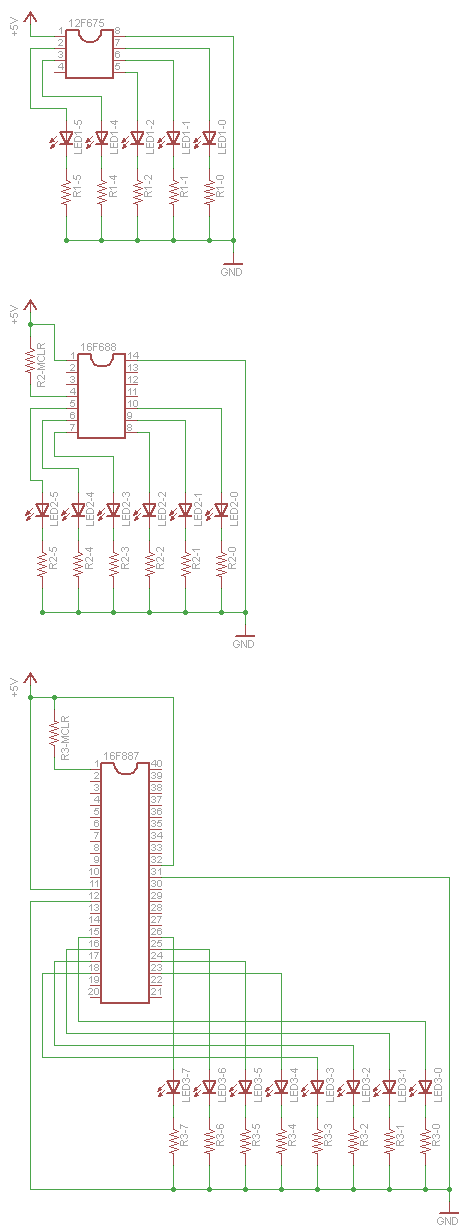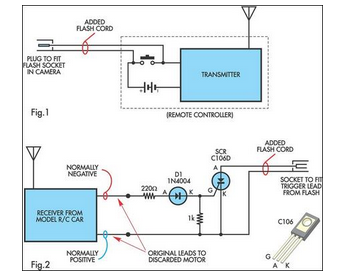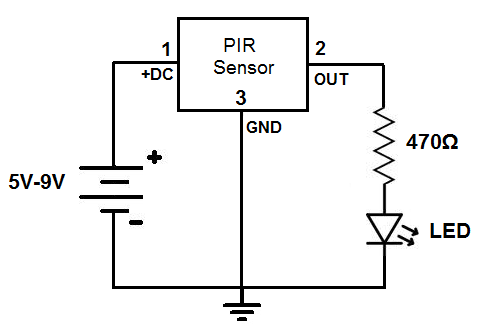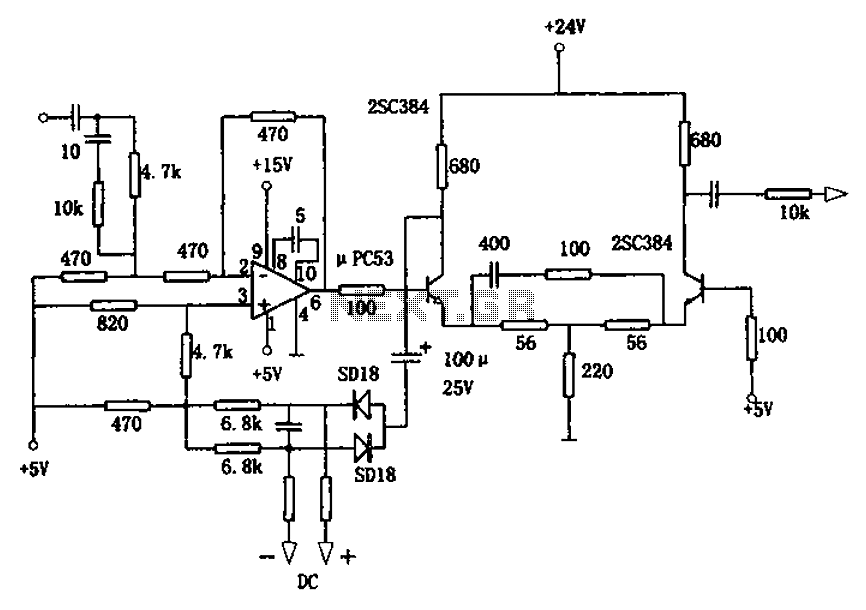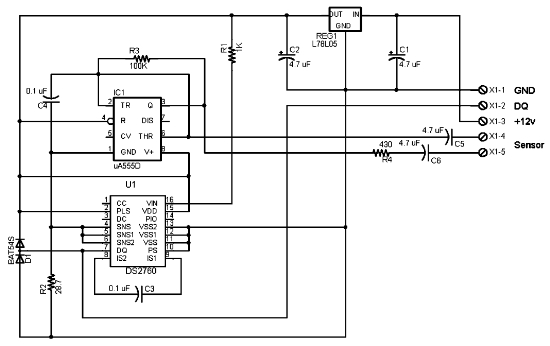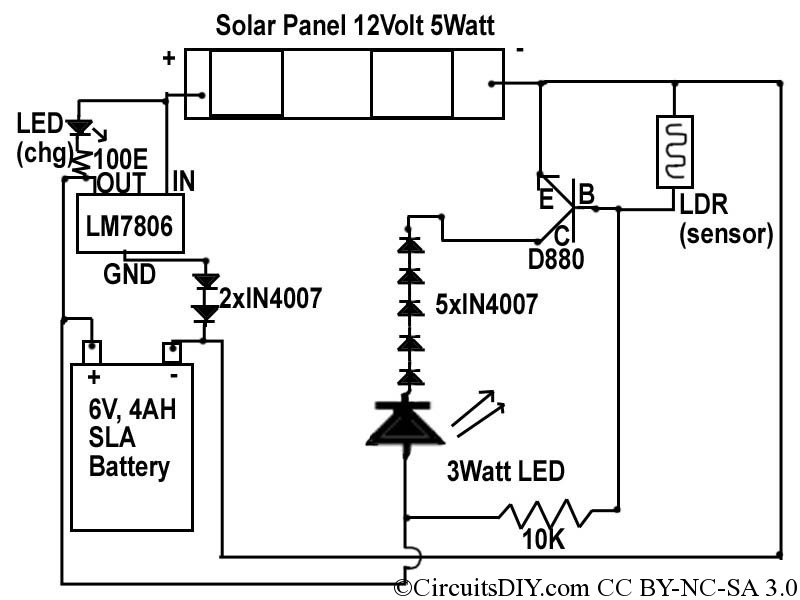
Proximity detector using NE567 IC. Switches LED when object comes near the sensor
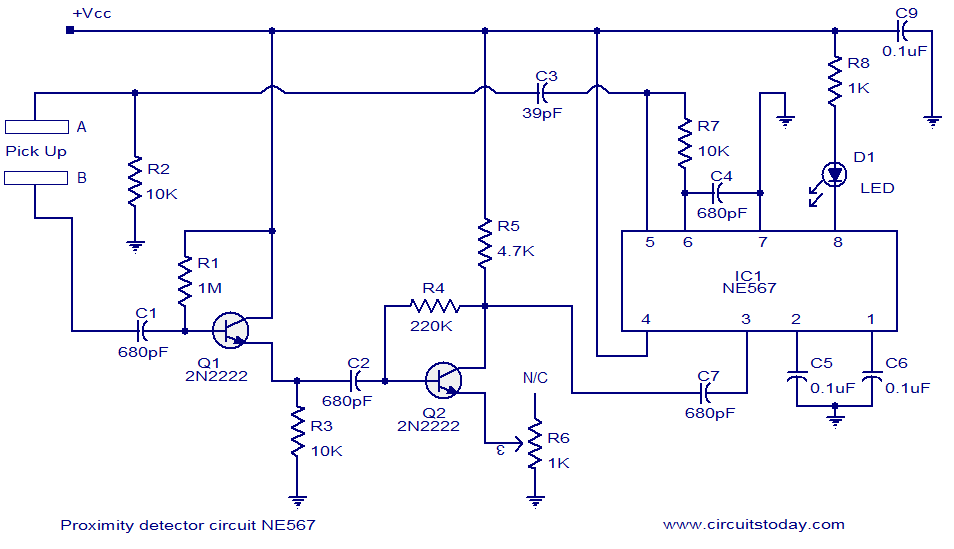
A simple proximity detector circuit utilizing the NE567 integrated circuit (IC). The circuit activates an LED when an object approaches the sensor.
The NE567 is a versatile phase-locked loop (PLL) device commonly used for applications such as proximity detection due to its ability to detect the presence of objects without physical contact. In this circuit, the NE567 is configured to operate as a proximity sensor by measuring the frequency of the incoming signal, which changes when an object comes within a certain range.
The circuit typically consists of the NE567 IC, a few passive components such as resistors and capacitors, and an LED. The input to the NE567 can be derived from a transmitter, like an ultrasonic or infrared emitter, which sends out a signal that reflects off nearby objects. When an object is detected, the reflected signal alters the phase of the input signal received by the NE567.
The LED is connected to the output of the NE567, which provides a high or low signal depending on the detection of an object. When the object approaches the sensor, the NE567 detects the change in frequency and switches the output to activate the LED. This provides a visual indication of proximity, making the system useful in various applications such as automatic lighting, security systems, or interactive devices.
The circuit can be further enhanced by adjusting the sensitivity through the use of variable resistors or by incorporating additional components for filtering or signal conditioning. This allows for greater flexibility in the design, enabling the proximity detector to be tailored for specific environments or detection ranges.Simple proximity detector circuit based on NE567 IC. Circuit switches an LED when the object comes near the sensor.. 🔗 External reference
The NE567 is a versatile phase-locked loop (PLL) device commonly used for applications such as proximity detection due to its ability to detect the presence of objects without physical contact. In this circuit, the NE567 is configured to operate as a proximity sensor by measuring the frequency of the incoming signal, which changes when an object comes within a certain range.
The circuit typically consists of the NE567 IC, a few passive components such as resistors and capacitors, and an LED. The input to the NE567 can be derived from a transmitter, like an ultrasonic or infrared emitter, which sends out a signal that reflects off nearby objects. When an object is detected, the reflected signal alters the phase of the input signal received by the NE567.
The LED is connected to the output of the NE567, which provides a high or low signal depending on the detection of an object. When the object approaches the sensor, the NE567 detects the change in frequency and switches the output to activate the LED. This provides a visual indication of proximity, making the system useful in various applications such as automatic lighting, security systems, or interactive devices.
The circuit can be further enhanced by adjusting the sensitivity through the use of variable resistors or by incorporating additional components for filtering or signal conditioning. This allows for greater flexibility in the design, enabling the proximity detector to be tailored for specific environments or detection ranges.Simple proximity detector circuit based on NE567 IC. Circuit switches an LED when the object comes near the sensor.. 🔗 External reference
